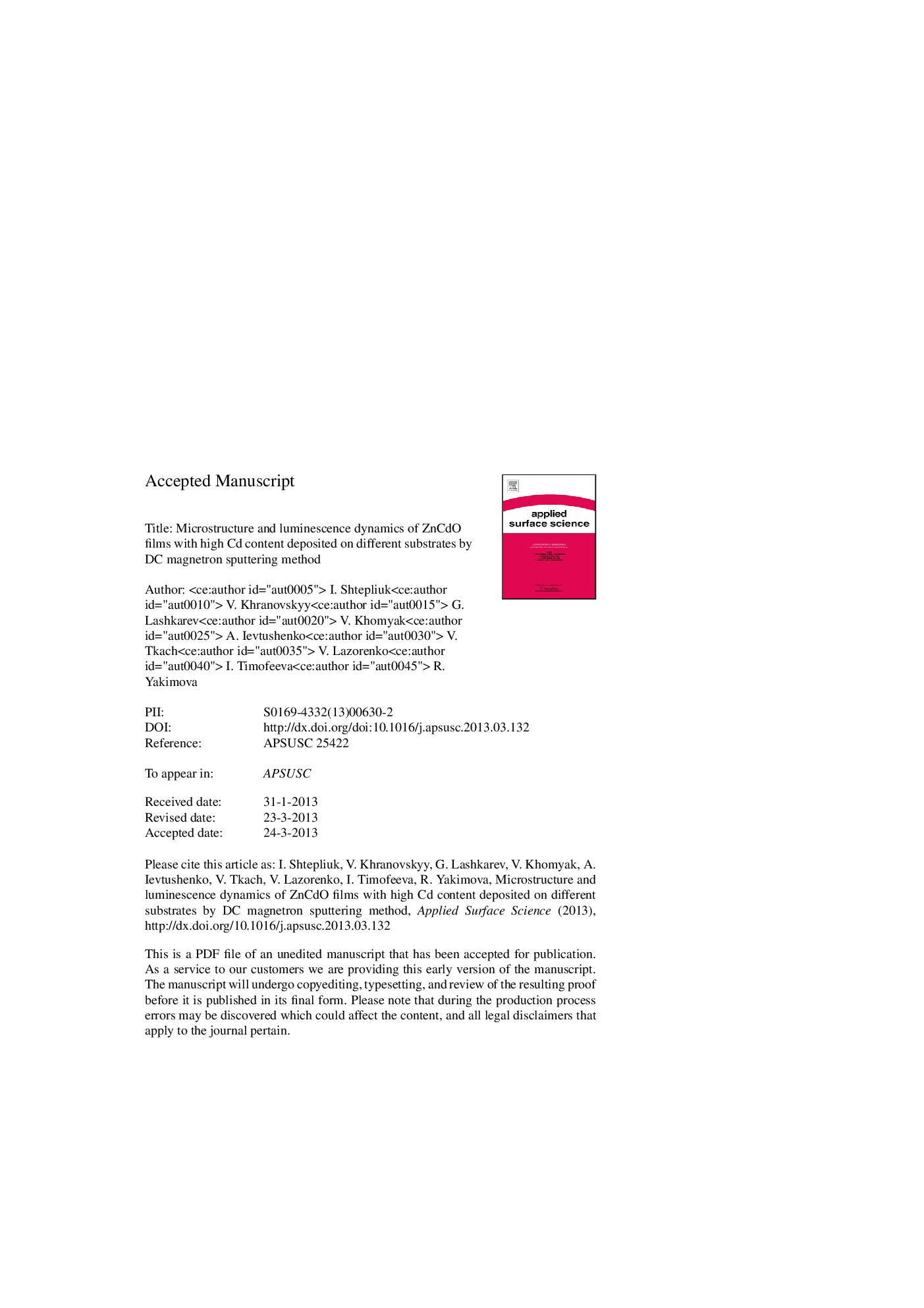| Article ID | Journal | Published Year | Pages | File Type |
|---|---|---|---|---|
| 5360119 | Applied Surface Science | 2013 | 34 Pages |
Abstract
Investigation of Cd behavior in the ZnCdO alloys, where Cd content exceeds the solubility limit, is of importance due to possible impurity segregation and second phases' formation in this material. We have studied the Cd behavior in the Zn1âxCdxO films deposited by dc magnetron sputtering on different substrates: c-plane Al2O3, bare Si (1Â 0Â 0) and Au (45Â nm)/Si (1Â 0Â 0). It is revealed that Cd content of 10Â at. % in the target results in average 6-8Â at. % of Cd in the films, depending on the substrate type. Structural analysis based on X-ray diffraction revealed the absence of Cd-related secondary phases. Time-resolved photoluminescence (TRPL) and high-resolution energy dispersive X-ray analysis (EDX) help to understand the recombination dynamics of spontaneous emission and to establish correlations between cadmium content and radiative lifetime. We have revealed that the internal quantum efficiency is influenced by the Cd content and defect concentration. It is suggested that increasing of the cadmium content results in the reduction of nonradiative recombination centers originating from point defects.
Related Topics
Physical Sciences and Engineering
Chemistry
Physical and Theoretical Chemistry
Authors
I. Shtepliuk, V. Khranovskyy, G. Lashkarev, V. Khomyak, A. Ievtushenko, V. Tkach, V. Lazorenko, I. Timofeeva, R. Yakimova,
